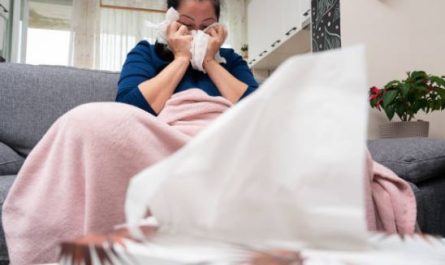The choice of antibiotics for pneumonia in adults depends on several factors, including the type of pneumonia (community-acquired, hospital-acquired, or aspiration), the severity of the infection, and the individual’s overall health condition. The decision on which antibiotics to use should be made by a healthcare professional based on these factors. Here are some commonly used antibiotics for treating pneumonia in adults.
Macrolides
Macrolide antibiotics, such as azithromycin, clarithromycin, and erythromycin, are often prescribed as first-line treatment for community-acquired pneumonia (CAP) in otherwise healthy adults. They are effective against most atypical bacteria and some common bacteria that cause pneumonia.
Beta-Lactam plus Macrolide Combination
This combination therapy involves a beta-lactam antibiotic, such as amoxicillin, ampicillin, ceftriaxone, or cefotaxime, along with a macrolide antibiotic. It is commonly used in moderate to severe cases of community-acquired pneumonia.
Fluoroquinolones
Fluoroquinolones, such as levofloxacin, moxifloxacin, or gemifloxacin, are broad-spectrum antibiotics that can be used to treat pneumonia, especially in individuals with comorbidities or risk factors for antibiotic resistance. They are often prescribed for patients with CAP who have recently used antibiotics, are immunocompromised, or have other specific risk factors.
Cephalosporins
Cephalosporin antibiotics, such as ceftriaxone, cefotaxime, or ceftaroline, are frequently used in hospitalized patients with more severe cases of pneumonia or those at risk for drug-resistant bacteria. They provide broad-spectrum coverage against common pathogens.
Penicillin or Ampicillin
Penicillin or ampicillin may be used to treat community-acquired pneumonia caused by susceptible strains of Streptococcus pneumoniae, particularly in individuals without severe illness or recent antibiotic use.
The choice of antibiotics should be individualized based on the specific circumstances and the prescribing healthcare professional’s judgment. It’s important to follow the prescribed dosage and duration of treatment as directed by the healthcare provider to ensure effective treatment of pneumonia.
What is the symptom of Pneumonia cause by Bacteria
Pneumonia caused by bacteria can present with a range of symptoms. The specific symptoms may vary depending on the type of bacteria involved and the individual’s overall health. Here are common symptoms associated with bacterial pneumonia.
Cough
A persistent cough is a hallmark symptom of pneumonia caused by bacteria. The cough may produce phlegm or pus, which can be yellow, green, or bloody in appearance.
Fever
Bacterial pneumonia often leads to a high-grade fever, typically above 100.4°F (38°C). The fever may be accompanied by chills and sweating.
Shortness of Breath
Difficulty breathing and shortness of breath are common in bacterial pneumonia. The affected person may experience rapid and shallow breathing or feel breathless even during rest.
Chest Pain
Chest pain is a common symptom of pneumonia, particularly when it is caused by bacteria. The pain may be sharp or a dull ache and can worsen with deep breathing, coughing, or movement.
Fatigue and Weakness
Bacterial pneumonia can cause extreme fatigue, weakness, and a general feeling of exhaustion. The body’s immune response to the infection can contribute to this fatigue.
Bluish Lips or Fingernails
In severe cases of bacterial pneumonia, a lack of oxygen in the blood can result in cyanosis, causing the lips or fingernails to appear bluish in color.
Rapid Heart Rate
Bacterial pneumonia can lead to an increased heart rate, known as tachycardia, as the body tries to deliver oxygen to the tissues.
Other symptoms
Additional symptoms may include headache, muscle aches, sore throat, nausea, vomiting, and a general feeling of being unwell (malaise).
It’s important to note that symptoms can vary among individuals, and some people may experience milder or more severe symptoms depending on their overall health and the specific bacteria causing the infection. If you suspect you have bacterial pneumonia or are experiencing concerning symptoms, it’s crucial to seek medical attention for proper diagnosis and treatment. A healthcare professional can evaluate your symptoms, perform necessary tests, and recommend appropriate antibiotics to effectively treat the bacterial pneumonia.
How to Diagnose Pneumonia?
Diagnosing pneumonia typically involves a combination of medical history evaluation, physical examination, and diagnostic tests. Here is an overview of the process:
Medical History – The healthcare professional will begin by asking about your symptoms, such as cough, fever, difficulty breathing, chest pain, and any other relevant details. They will inquire about your medical history, including any underlying health conditions, recent illnesses, or hospitalizations.
Physical Examination – The healthcare professional will perform a thorough physical examination, which may include listening to your lungs with a stethoscope to assess breathing sounds, checking for signs of respiratory distress, examining your chest for any abnormalities or tenderness, and evaluating other vital signs such as heart rate and oxygen saturation.
Chest X-ray – A chest X-ray is commonly used to help diagnose pneumonia. It can provide a clear image of the lungs and reveal areas of infection or inflammation. The X-ray can help determine the location and extent of the infection.
Laboratory Tests – Blood tests may be conducted to assess the white blood cell count, which can indicate an infection. Other blood markers, such as C-reactive protein (CRP) and procalcitonin, can provide additional information on the presence and severity of inflammation. Blood cultures may be taken to identify the specific bacteria causing the infection, especially in cases of severe pneumonia or when hospital-acquired pneumonia is suspected.
Sputum Culture – If you are producing sputum (phlegm), a sample may be collected and sent for a sputum culture. This test helps identify the specific bacteria causing the pneumonia and determine the most appropriate antibiotic treatment.
Other Tests – In some cases, additional tests may be ordered, such as a CT scan of the chest or a bronchoscopy, which involves inserting a thin, flexible tube with a camera into the airways to obtain a sample for analysis.
It’s important to consult a healthcare professional if you suspect you have pneumonia or are experiencing concerning symptoms. They will evaluate your symptoms, perform the necessary tests, and make an accurate diagnosis. Prompt diagnosis and treatment are crucial to effectively manage pneumonia and prevent complications.
FAQS – Is Pneumonia Transmissible?
Yes, pneumonia can be transmissible from person to person, but it depends on the underlying cause of pneumonia.
Bacterial Pneumonia
Some types of bacterial pneumonia, such as Streptococcus pneumoniae or Legionella pneumophila, can be contagious. These bacteria can spread from person to person through respiratory droplets when an infected individual coughs or sneezes. Close contact with an infected person increases the risk of transmission.
Viral Pneumonia
Viral pneumonia, caused by viruses such as influenza, respiratory syncytial virus (RSV), or SARS-CoV-2 (the virus causing COVID-19), is highly contagious. These viruses can spread through respiratory droplets, close contact, or touching surfaces contaminated with the virus and then touching the face.
Fungal Pneumonia – Fungal pneumonia is typically not contagious and does not spread from person to person. It usually occurs in individuals with weakened immune systems or those exposed to certain environmental factors.
Aspiration Pneumonia – Aspiration pneumonia, caused by inhaling food, liquids, or other substances into the lungs, is not contagious and does not spread from person to person. It occurs when bacteria from the mouth or throat enter the lungs.
To reduce the risk of transmitting and contracting pneumonia:
-Practice good hand hygiene by washing hands frequently with soap and water or using hand sanitizer.
-Cover your mouth and nose with a tissue or your elbow when coughing or sneezing.
-Maintain a distance from individuals who have respiratory symptoms, such as coughing or sneezing.
-Follow appropriate respiratory hygiene and mask-wearing measures, especially during outbreaks of respiratory infections.
-Stay up to date with vaccinations, including the pneumococcal vaccine and the influenza vaccine, to prevent certain types of pneumonia.
If you suspect you have pneumonia or have been diagnosed with pneumonia, it is important to take appropriate precautions to prevent the spread of the infection to others. Follow the advice of healthcare professionals regarding treatment, isolation if necessary, and infection control measures.



